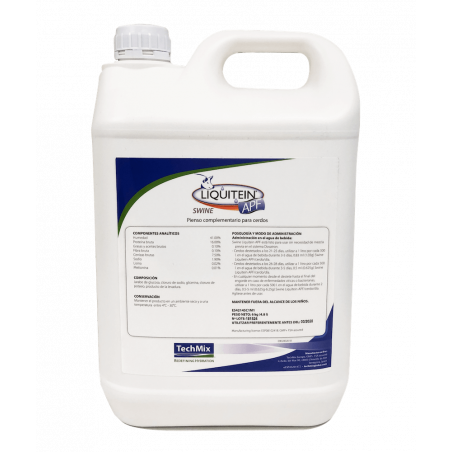Climate as a challenging factor for sows
Climate is the first most limiting factor for reaching maximum production efficiency in hot climate regions such as Latin America and Asia. While heat stress is an occasional challenge in temperate regions during so-called "heat waves", in the tropical and subtropical areas it is a constant challenge. In addition, in these regions the effects of high temperatures can be intensified by the relative humidity (RH) of the air (Renaudeau et al., 2008).

Under heat stress, sows reduce their intake in order to reduce their heat production due to the thermal effect of feed digestion. This reduction in voluntary feed intake has negative consequences on the mobilization of body reserves , milk production, and longevity of the sow (Dourmad et al., 1998; Renaudeau et al., 2008; Silva et al., 2009a). Climatic effects are more intensified in modern genotypes due to high growth rates, deposition of muscle tissue, and reproductive potential (Nienaber et al., 1997; Renaudeau et al., 2008; Silva et al., 2018).
In order to attenuate the negative effects of heat stress, many research trials in recent years have tried to study environmental and nutritional solutions to improve sow performance under heat stress conditions. Several environmental techniques have been evaluated, but only a few were found effective and economical in minimizing the impact of heat stress in pig production (Renaudeau et al., 2008). These solutions include management strategies to reduce the building ambient temperature (fans, evaporative cooling systems) and/or to increase animal heat losses (floor cooling, drip cooling, snout cooling) (McGlone et al., 1988; Silva et al., 2006 and 2009). Nutritional solutions can offer a more economical viable alternative strategy that can be adopted to minimize the negative effects of heat stress. Diets with reduced protein content decrease heat production and may attenuate the effect of elevated temperature upon feed consumption (Renaudeau et al., 2001; Le Bellego et al., 2002; Silva et al., 2009a). The increase of dietary nutrient density has been studied by several authors (McGlone et al., 1988; Schoenherr et al., 1989; Dove and Haydon, 1994; Quiniou et al., 2000; and Silva et al., 2009a; Silva et al., 2009b) but without effective improvements on sow and litter performance. In contrast, very little has been published on the effects of feed flavours on sow performance. The strategic use of flavours can be beneficial to stimulate feed intake (Moser et al., 1987; Frederick and Van Heugten, 2006; Wang et al., 2014), offering the potential to improve milk production and litter performance under heat stress conditions.
Understanding feeding behaviour in lactating sows
Heat stress can also cause changes in the behaviour of lactating sows.These changes are due to thermal stress impact on the kinetics of voluntary intake, feeding pattern and nursing ability of sows, reducing total daily intake of sows, reducing nursing time and inducing higher agitation. Therefore, sows tend to lie down and rise more often than normal, and as a result of this unrest there is an increase in piglet mortality by crushing (Silva et al., 2006).
At constant daily temperatures in temperature-controlled rooms (Quiniou et al., 2000b; Renaudeau et al., 2002), or with experimentally-generated nycthemeral fluctuations of daily temperature (Quiniou et al., 2000a) or under naturally fluctuating temperatures (Renaudeau et al., 2003a; Gourdine et al., 2006; Silva et al., 2009a and 2009b), two peaks of feeding activity occur during the day. One peak is observed early in the morning and the other is observed in the evening. According to Silva et al. (2009a), these observations suggest that the feeding pattern activity of lactating sows is mainly driven by light intensity changes in the farrowing room. However, the influence of other environmental factors, such as the presence of staff, the removal of uneaten feed, and the distribution of feed can also either attenuate or accentuate this diurnal bimodal pattern (Renaudeau et al., 2003b; Silva et al., 2009a).
Silva et al. (2009a) also showed that feeding pattern was affected by season or, more specifically, by the daily kinetics of temperature and RH. Renaudeau et al. (2003b), who conducted a study under the same conditions as the previous authors, observed that the reduced feed intake during the hotter period of the day was partly counterbalanced by a greater quantity of feed intake during the cooler periods of the day. In contrast to the report of Gourdine et al. (2006), which showed that 64% of the total daily feed intake occurred during the nocturnal period during the hot season, Silva et al. (2009a) observed that 44% of daily feed intake occurred during the nocturnal period and that this value was greater in the hot season than in the cold season (47%). In general, these results indicate that climatic conditions can also influence the nycthemeral feeding pattern in lactating sows.
Based on data from the previous studies, each degree increase in temperature corresponded to a reduction in daily feed intake of 462 g/d (Silva et al., 2009a). Between 25 and 27°C with a 50 to 60% RH, Quiniou and Noblet (1999) reported a reduction in feed intake equivalent to 254 g/d per degree Celsius. The greater daily feed intake reduction per degree Celsius found in the first study (462 g/d per degree Celsius) can be related to the effect of the increased humidity observed during the study (85 to 98%). These results suggest that the negative effect of elevated ambient temperature may be accentuated by the increased RH in a tropical climate.





